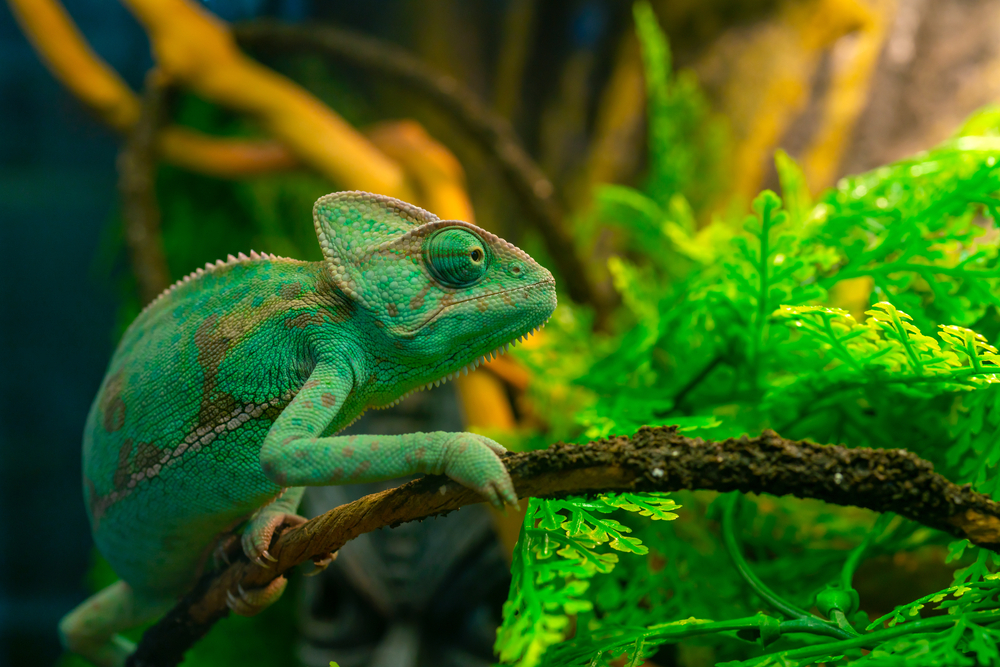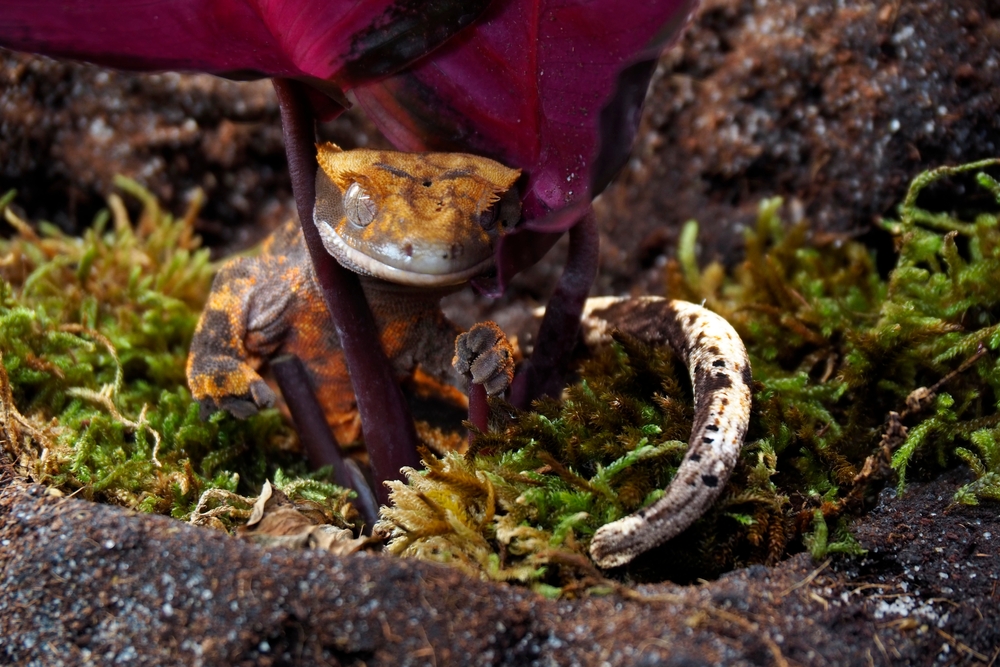Go Tropical! Setting Up a Rainforest-Style Terrarium
Let's bring a bit of the Amazon Rainforest into your home! Your tropical reptile or amphibian pet will adore the warm, humid air, and you'll love the beauty of a lush decked-out terrarium. Here's how to set up this gorgeous habitat.

What Is a Tropical Terrarium?
A tropical terrarium mimics a naturally warm, moist environment, like the branches of a tree in a rainforest or a nest in the tall grasses of a tropical savanna.
A tropical terrarium can grow plants, house pets, or — both!
Some typical features of a tropical terrarium include accessory lighting and heating to increase the ambient temperature, high humidity, and real or faux green plants, all tucked inside a glass enclosure that can retain water and heat.
Tropical terrariums contrast with a desert environment. Deserts are often drier but can reach higher basking temperatures during the day due to direct, unfiltered sunlight. In nature, tropical environments largely receive indirect sun filtered through a lush canopy of trees and foliage, which retains moisture and leads to a more humid environment.
Check out the Zilla Habitat Guide for specific temperatures and humidity ranges for a variety of tropical and desert reptile pets.
Which Pets Can Live in a Tropical Terrarium?
Both tropical reptiles and certain amphibians can live in a tropical terrarium. Common pets that would love a rainforest-like habitat include:
- African fat-tailed geckos
- Anoles
- Ball pythons
- Red-tail boas
- Crested geckos
- Day geckos
- Black-necked garter snakes
- Jackson's chameleons
- Milk snakes
- Pacman frogs
- Veiled chameleons
- White's tree frogs
Tropical terrariums are not ideal for desert-dwelling reptiles such as bearded dragons, Russian tortoises, and leopard geckos. Extra-large reptile pets, such as Chinese water dragons, iguanas, and monitors, also benefit from a tropical climate, but these animals often need more space than a glass terrarium can give.
Setting Up Your Own Rainforest Tropical Terrarium
Let's get this terrarium put together and ready for your pet to move into. The setup doesn't have to take too long — you can set one up in less than an hour. As soon as the environment hits the pet's ideal temperature range, it's ready to add your pet.
Habitat
Choose a glass enclosure to keep the pet toasty warm and allow ample room to roam. Some reptiles, like tree snakes and frogs, enjoy a vertical habitat to climb freely. Others prefer a longer, horizontal tank to have more ground-exploring space. Be sure to research the species you're considering to discover which type of habitat your new pet would prefer.
We love the modern, sleek styling of QuickBuild Terrariums that assemble in about 10 minutes and are strong and sturdy. Because all four sides are glass, you can watch your reptile play in their environment with an unobstructed view. Getting access to your pet is easy through the double-hinged top screen or the sliding front-opening doors — both lock securely to ensure your pet stays safely tucked inside their habitat.
Quick Build Terrariums break down quickly for storage, moving your terrarium to a new location, or even when you're moving to a new home. (You can now take your terrariums with you instead of giving them away and buying new ones!)
If you have more than one reptile pet, these terrariums conveniently stack to keep multiple habitats together and maintain the clean lines of your decorating style. This high-quality habitat comes in two options, one with a water-tight base and the other with an easy-clean bedding tray.
Bedding

Pick a bedding (also known as substrate) that holds moisture well. Frogs and toads love coconut husk with mossy layers they can burrow into, while tropical geckos thrive with Zilla Bark Blend or the Zilla Jungle Mix.
Discover the best bedding for your buddy in the Zilla Bedding Guide.
Lighting & Heating
When you spend time on a tropical vacation, you soak up the sun and heat. Your tropical reptile and amphibian pets enjoy this as well. Accessory light fixtures fitted with the proper spectrum of light and heating abilities will keep your pet cozy and happy.
Learn about the UVA and UVB lighting your pet needs in the Lighting & Heating Guide. And ensure your pet reptile has the proper amount of UVB by using a Rapid Sense Decor indicator.
Environment Control Accessories
To ensure the habitat stays warm and moist enough for your pet, install temperature and humidity gauges inside the enclosure and peek at them often to ensure you stay in ideal ranges for your scaly buddy.
Reptile Decor
This is the part where you can go wild! Use real or faux branches, vines, plants, and flowers to make your tropical rainforest terrarium really pop. You can mimic their natural environment or consider giving it a theme, like a tropical island paradise, or have it resemble a picture-perfect postcard from a rainforest. You could also coordinate it with earthy colors in the room.
Other decor options include rock bowls for drinking or soaking, relaxing hideouts, a waterfall for climbing, and ledges for sunbathing.
Water Sources
Instead of a water bowl, consider giving your pet reptile a water feature that looks like a cave and mimics dripping water after a rainstorm. The Spring Cave provides running water, a cave to crawl into, and a blue LED light allowing you to see them at night. (Plus, it helps increase the overall humidity of the habitat!)
In addition to the habitat's water bowl (and possible waterfall!), you can amp up the humidity by using an electric water mister or manually spritzing the tropical environment with tap water treated with Water Conditioner.
Building a tropical rainforest terrarium not only meets your pet's environmental needs to keep them happy and healthy but can also become a beautiful centerpiece for your home.
